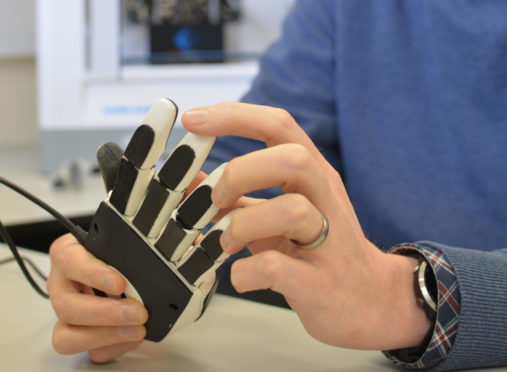North-east engineering prowess could soon be drawn upon to create life-changing artificial limbs and organs.
Aberdeen University has launched a new biomedical engineering masters programme.
The cutting-edge science is at the forefront of medical research – and has already proven key in the invention of new, potentially life-saving devices.
Biomedical engineering has been used to create artificial organs and limbs, as well as surgical machinery and robots.
The university’s move to introduce the course – a combination of medical sciences and engineering – is a result of doctors becoming more reliant than ever on engineers, given the vast array of technology used in hospitals around the world.
Course leader Ed Chadwick, a leading bio-engineering researcher in his own right, said: “Biomedical engineering is a fast-growing area, with opportunities for careers in clinical engineering, the medical device industry, and academic research.
“There’s an increased use of advanced technology in medicine, and clinicians are becoming more reliant on engineers to deliver services because there’s so much that’s technology-based now.
“Our new programme has been launched in recognition of the need for training in this area, and draws on the university’s strengths in areas such as mechanical engineering, clinical engineering and fluid mechanics.”
The new course will draw upon the university’s school of engineering and school of medicine, medical Sciences and nutrition.
Dr Chadwick said the interdisciplinary aspect of the new programme was “particularly important”, adding: “The programme is delivered jointly by staff in engineering and in medicine, with core conversion courses in anatomy and physiology in life sciences for physical sciences graduates.
“What’s really exciting about this programme is that it opens up new opportunities for graduates who might not have realised they could aim for a career in medicine.
“Biomedical engineering technologies are playing an important role in transforming medicine and healthcare delivery, and our new masters programme offers a route to a career in this exciting and growing area.”










